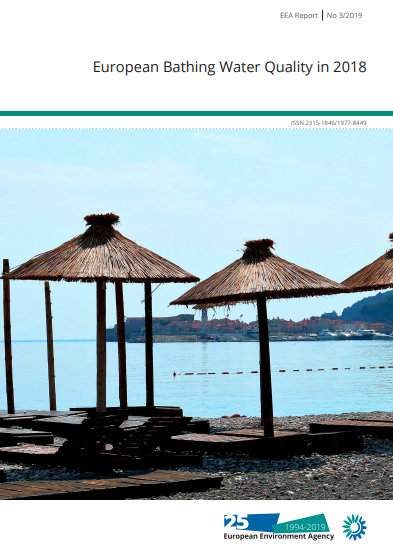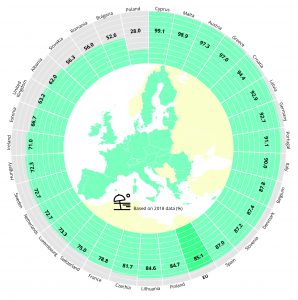New report rates over 85% of European bathing sites as excellent for water quality
- June 11, 2019
- Posted by: administrator
- Category: Environmental, Water Issues, Europe

Just over 85% of bathing water sites across Europe monitored last year met the European Union’s highest ‘excellent’ and most stringent quality standards for water cleanliness, according to the latest annual European bathing water quality report.
An overwhelming number — 95.4% — of the 21,831 bathing water sites monitored in the 28 EU Member States met the minimum quality requirements under EU rules, according to this year’s report by the European Commission and the European Environment Agency (EEA). In addition, 300 bathing sites monitored in Albania and Switzerland were also included in the report.
 The level of bathing sites meeting the most stringent ‘excellent’ quality standards rose slightly from 85.0% in 2017 to 85.1% last year. The number of those meeting the minimum ‘sufficient’ standing fell from 96% to 95.4% from 2017 to 2018. This minor drop is mostly due to the opening of new bathing waters sites for which the dataset of four bathing seasons required for the classification by the Directive is not yet available. In 2018, 301 (or 1.3%) of all bathing water sites in the EU, Albania and Switzerland were rated as having ‘poor’ water quality. This is slightly lower than the 1.4 % in 2017.
The level of bathing sites meeting the most stringent ‘excellent’ quality standards rose slightly from 85.0% in 2017 to 85.1% last year. The number of those meeting the minimum ‘sufficient’ standing fell from 96% to 95.4% from 2017 to 2018. This minor drop is mostly due to the opening of new bathing waters sites for which the dataset of four bathing seasons required for the classification by the Directive is not yet available. In 2018, 301 (or 1.3%) of all bathing water sites in the EU, Albania and Switzerland were rated as having ‘poor’ water quality. This is slightly lower than the 1.4 % in 2017.
Hans Bruyninckx, EEA Executive Director, said:
“Our report confirms that Member States’ efforts over the last 40 years, mainly in wastewater treatment, have paid off. Today, most Europeans enjoy excellent bathing water quality. However, this is only one of the many components, ranging from tackling plastic pollution to protecting marine life, we need to work on in order to achieve healthier seas, lakes and rivers.”
Implementation of the the bathing water requirements set out in EU’s Bathing Water has helped to vastly improve the quality of Europe’s bathing water over the last 40 years. Effective monitoring and management introduced under the directive, combined with investments in the urban waste water treatment have led to a drastic reduction in untreated or partially treated municipal and industrial waste ending up in the water.
Under the rules, local authorities collect water samples at officially identified bathing sites throughout the swimming season. Samples are analysed for two types of bacteria that indicate pollution from sewage or livestock.
Other key findings
- In four countries, 95% or more of bathing sites were found to have excellent water quality: Cyprus (99.1% of all sites), Malta (98.9% of all sites), Austria (97.3% of all sites), and Greece (97% of all sites).
- All reported bathing water sites in Cyprus, Greece, Latvia, Luxembourg, Malta, Romania and Slovenia were of at least sufficient quality in 2018.
- The three countries with the highest numbers of poor quality bathing water sites are Italy (89 bathing water sites or 1.6%), France (54 sites or 1.6%) and Spain (50 sites or 2.2%). In comparison with 2017, the number of poor quality bathing water sites in France decreased (from 80 in 2017 to 54 in 2018), while there was an increase in poor quality bathing waters in Italy (from 79 to 89) and in Spain (from 38 to 50).
The major sources of pollution are sewage and water draining from farms and farmland. Such pollution increases during heavy rains and floods due to sewage overflow and polluted drainage water being washed into rivers and seas.
The assessment of the bathing water quality under the Bathing Water Directive makes use of the values of two microbiological parameters: Intestinal enterococci and Escherichia coli.
Bathing water quality is classified, depending on the levels of faecal bacteria detected, as ‘excellent’, ‘good’, ‘sufficient’ or ‘poor’. Where water is classified as ‘poor’, Member States should take measures such as banning bathing or advising against it, providing information to the public, and taking suitable corrective actions.
Click here for more information and to download the report European Bathing Water Quality in 2018
